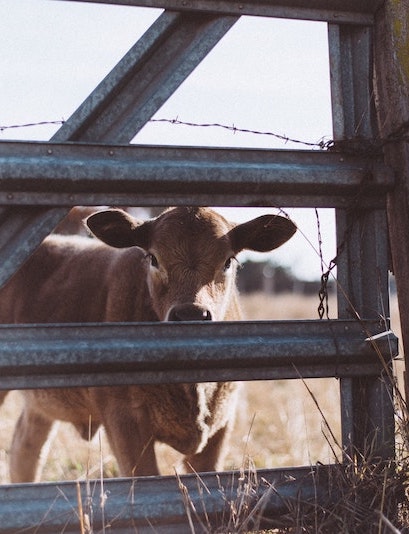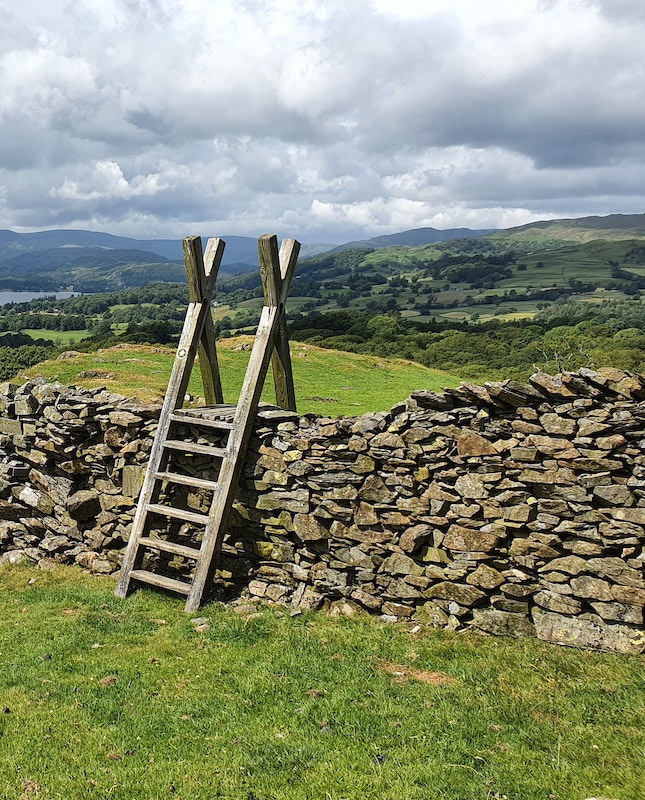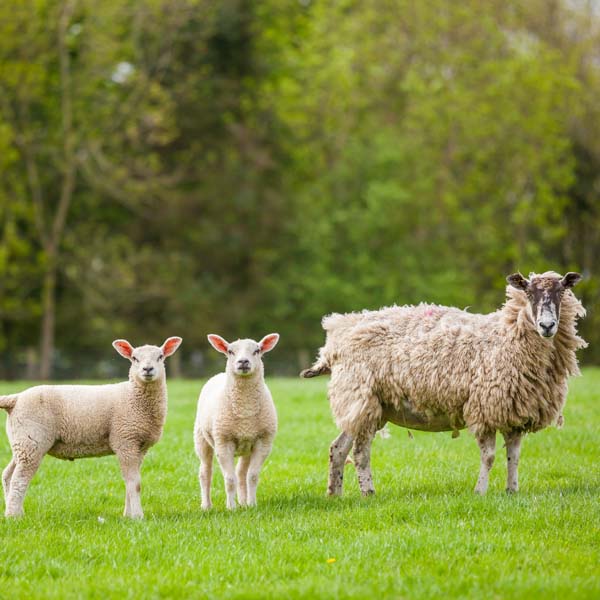Discover a comprehensive range of fencing options designed to provide maximum protection for livestock. From the classic appeal of post & rail fencing to the practicality of post & wire fencing and the reliability of stock fencing, choosing the right agricultural fencing option is essential for ensuring the safety and security of valuable livestock. Find out more about the ideal fencing solution that not only meets but exceeds requirements and safeguards your assets.

When it comes to farm fencing, the safety and security of livestock is upmost priority. Unlike traditional garden fencing, fencing for livestock needs to protect your animals from predators, as well protecting them from endangering themselves through escape.

Also known as woven wire, field or livestock fencing, stock fencing typically consists of wire that has been woven into a grid mesh design, forming a strong and durable barrier that works well for containing livestock. The size of the mesh varies depending on the type of livestock being contained.
The height of livestock fencing depends on the type and size of livestock being contained. For cattle, consider sourcing a fence between 4 to 5 feet high, while for smaller livestock such sheep and goats, a height of 3.5 to 4 feet may be sufficient.

High-tensile wire fencing with treated wood posts is a suitable fence for small livestock. Typically made from galvanised steel with a carbon content of at least 0.28%, which allows the wire to be thinner and more lightweight whilst maintaining the strength and durability.
The increased carbon content of high-tensile fencing does mean that it's less malleable than low-carbon fencing, and therefore can be tough to bend. However, if you're looking for a durable option that is less likely to break, high-tensile wire fencing is a strong option.
Installation of high-tensile wire fencing requires a tensioning system that can pull the wire taut, such as a ratchet tensioner or wire strainer.

Post and rail fencing consists of typically wooden posts set at regular intervals, with horizontal rails attached to create a barrier. Generally, posts should be spaced between 6 to 10 feet apart, with at least one-third of their total length anchored into the ground.
When opting for wooden post and rail fencing, it's important to consider treatment and protection from post-rot and insect damage. Pressure-treated wooden rails and posts are more reliable and require less upkeep due to the fact that anti-rot preservatives have been forced into the cellular structure of the wood.
However, it's still a good idea to invest in post rot protector sleeves, such as Postsaver Post Rot Protection, to protect your fence posts against ground-line rot and decay. We'll get into this more below.

Poultry fencing, also called chicken wire/netting, is made of thin, flexible wires woven into a hexagonal mesh design. This type of fencing is lightweight and affordable and ideal for containing chickens and other poultry.
To maximise protection from predators, aim to bury the bottom of the fence 6-12 inches below ground so animals can't dig or squeeze underneath.
Consider adding overhead netting or wire to protect poultry against aerial predators such as birds of prey. The height of poultry fencing will depend on the flight capabilities of the birds it is protecting. For chickens, a height of at least 6 foot for the majority of breeds is generally recommended.

Electric fencing uses electrical pulses to create a psychological deterrent for livestock such as cattle, horses, sheep, goats, and pigs. A brief electric shock is transmitted through the fence to any animal that touches it, which physiologically incentivises the animal to avoid the fence in the future to avoid the shock.
It's crucial to source electrical fencing from a reputable supplier that meets regulations and can provide proper certification to show the energiser (which transmits the electrical current) is safe for both people and livestock.
Safety is paramount when it comes to managing an electric fence system. Regularly testing fences using a voltmeter to ensure it's up to standard and emitting a safe yet effective voltage (between 2,000 and 9,000 volts). A higher voltage may be required during the winter (at least 4,000 volts) to account for the thicker coats of livestock during this time. Ensure that electric fencing is clearly marked with warning signs to humans and visual cues (such as red flags) to animals so that they can learn where the boundaries are more easily.

Secure agricultural fencing and gateways are a vital part of a farm's infrastructure. They serve as a boundary to protect livestock and crops. We appreciate farmers want a long-term, cost-effective solution to reduce fence post-failure, so read on to understand why fence and gate posts fail and see how Postsaver can help.
Farm fencing underpins the security of farmland and depending on the type of fencing, replacement costs could be hefty. These vary based on the kind of fence, the ground it covers and the accessibility for machinery. It is essential to consider the time and the running costs of any machinery when preparing to undertake the job yourself.
We've spoken to several agricultural fencing contractors to set out the likely costs involved. We asked for pricing of simple stock fencing with wire mesh and a post spacing of three meters using 3-4" rounds. The fencing quoted is situated on flat ground with easy access for machinery. The average cost per metre was between £7-10, more complex fencing with limited access over rough ground, will be more expensive. Read on to discover why fence posts fail and assess the best alternatives to give the greatest long-term cost-benefits.
Type of Fencing: Stock fencing run of 3-4" rounds spaced at 3 metres
Length: 1,000 Metres
Cost of Fence: £10,000
Average Fence Replacement: Once every 10 years
Fence Replacement Cost: £10,000 @ £10 per metre
Additional Cost of Postaver rot protectors: £386
Postsaver rot protection is proven to protect against ground rot and provide a great cost-saving opportunity for agricultural fencing. Let's look at a standard stock fence again with 3-4" round posts spaced at three metres to see how much you could save.
A 1,000m run equates to 333 posts, spaced at 3 metres. A typical non-creosote-treated fence may need to be replaced every 10 years.
The additional cost of applying rot protection to the 1000m run of fencing would be £386 and, as a percentage increase of total fencing cost, that is just 3.86%. Based on an installation cost of £10 per metre, equating to a £10,000 installation cost.
Postsaver rot protectors offer a 20 year post-replacement guarantee to any UC4 preservative-treated post they are correctly applied to which, compared to a fence without protection, could represent a saving of up to £9,614.
Postsaver is a low-cost addition to agricultural fencing and gate posts which is guaranteed to increase the lifespan.

Ground line decay is the leading reason for agricultural fence and gate post-failure. Posts typically rot in the upper 6 inches of the soil at the ground line section where the earth is well oxygenated with a higher moisture content and warmer temperatures. This makes it a breeding ground for nutrients, fungi and decaying organisms.
One of the leading catalysts for decay is the water content of a post. Once above 25%, decay sets in, and it's only a matter of time before that post becomes a costly replacement.
The surface of the timber at the ground line section needs a complete seal to prevent the loss of preservatives and to keep out the causes of decay.
Learn more about how Postsaver rot protection forms an air and watertight seal at the ground line section of your posts.

Creosote has been a long-standing method of protection for preserving wood. Although effective, it is a challenging product to handle and contains several carcinogenic properties.
Many farmers have resorted to Creosote, but it may soon become a thing of the past as Creosote is now classed as a category 1B carcinogen by the European Chemicals Agency (EHCA). Bans in European nations is causing the UK to follow suit, and our research indicates Creosote could soon be unavailable for both commercial and domestic use in the UK.
Fortunately, Creosote is not the only available option for prolonging the life of fencing. Other options, such as steel, are becoming increasingly common, but the high price can make a fencing job very expensive. Steel posts are also still susceptible to corrosion at the ground line section and will fail over time.
When researching the most affordable long-term option, Postsaver rot protection are 100% effective in preventing ground line decay and offer a 20 year post-replacement guarantee when the rot protectors are correctly applied to UC4 preservative-treated posts.
We recommend replacing agricultural fencing in spring or early autumn when softer ground conditions make post-driving more straightforward. The winter months make work challenging, and machinery access may be difficult with saturated or hard ground.

Autumn is often the perfect time for farmers as the rush of the summer has passed, and many people will be focusing attention on maintenance and improvements around the farm. If you're going to carry out the work yourself, this is arguably the best time of the year. Postsaver rot protection wraps or sleeves can be fitted on site with posts ready to install in minutes, alternatively pre-sleeved posts can be purchased.
Using an local fencing contractor is a great way to save time and hassle, especially when running a busy operation. Installing long runs of fencing requires a great deal of machinery and time which not all farmers have access to. A great fencing contractor deliver a quality job no matter what the ground conditions.
Postsaver works with a number of fencing contractors and has an accredited list of approved installers but we are always expanding our reach and can supply preferred contractors with everything they need to an easy installation. Each installation comes with a Postsaver guarantee certificate - check out our guarantee for more information.

Adding gates and access points to farm fencing is essential for allowing entry and exit to the enclosed areas of land, allowing easy movement of livestock, and providing convenient access for equipment and vehicles.
Standard gate widths for livestock range from around 10 to 16 feet, but it's important to consider the size of individual vehicles and equipment to understand how wide gates need to be.
Swinging gates are the most common type of farm gate and work by swinging on hinges attached to gate posts. Cattle gates are usually swinging gates made of heavy-duty metal.


Thoughtful consideration should be given to integrating pedestrian access points within farm infrastructure. This consideration ensures that both visitors and farm workers can navigate the premises conveniently, eliminating concerns about livestock escaping. Stiles, kissing gates, and bridle gates are popular choices for facilitating pedestrian movement on farms, embodying practical and aesthetically pleasing options to maintain secure boundaries while providing ease of access.
Cattle grids form as barriers to prevent livestock, particularly cattle, from crossing boundaries, allowing vehicles to pass without the need for gates. Familiarity with the design and construction, including proper sizing of gaps, is crucial for a seamless integration. Strategic placement at critical points enhances farm management, with regular maintenance ensuring continued functionality but awareness of local regulations and compliance is key. Customisation options exist, offering flexibility to tailor grids to specific farm needs. Educating farm personnel on the purpose and use of cattle grids ensures everyone plays a role in maintaining their effectiveness. A well-informed approach to cattle grids empowers farmers to enhance livestock management and streamline daily operations bringing efficiency.


The spacing of T-posts can vary depending on a number of factors, including the type of livestock being contained and the fencing material being used. Here are some general guidelines for T-post spacing:
Stock Fencing: Between 8 to 12 feet apart.
High-Tensile Wire Fencing: Between 8 to 10 feet apart.
Post and Rail Fencing: Between 6 to 10 feet apart.
Poultry Fencing: Between 5 to 8 feet apart.
Electric Fencing: Between 10 to 16 feet apart. The arrangement of T-posts for electric fencing varies based on the wire or tape employed and the desired level of containment. Therefore, refer to the manufacturer's instructions for individual electric fencing setup.
To calculate the approximate length needed to fence the perimeter of land, take the square root of the land area (to get the length of one side), then multiply this by four sides to find the total length needed to enclose the space. For example, 1 acre equates to approximately 43,560 square feet, meaning approximately 836 feet of fencing (209 ft x 4 sides) will be required for an acre-sized piece of land.
Of course, this can change according to the shape and terrain variations, and it's always best to conduct your own measurements or consult a fencing expert. Consider using long-distance measuring devices such as measuring wheels or GPS measuring tools to get a more accurate picture of the amount of fencing that will be required. Measuring wheels are particularly good because they can account for slopes, hills and irregular land shapes.
The best type of farm fencing for cattle will depend on factors such as the breed, age and behaviour. Generally, livestock fencing and high-tensile wire fencing are ideal choices due to their tight mesh designs, which prevent cattle from getting their heads or bodies stuck in the fence, and they can generally withstand the pressure from large animals leaning or pushing against them.
If containment is particularly important, however, consider an electric fence that will provide a psychological deterrent as well as a physical barrier. If this isn't so much of a worry (for example if cattle are in a paddock on a large ranch and there are no young or excitable cattle) then post and rail fencing can also be an appealing option.


In summary, when considering building or replacing agricultural and farm fencing it is important to invest in well-designed and properly installed fences in order to act as a barrier against wildlife, predators, and straying livestock. To do this effectively, assess what materials, designs, and access points will be best suited to the type of livestock kept and vehicles used, and ensure that fences are treated and maintained in a way that ensures its longevity.


